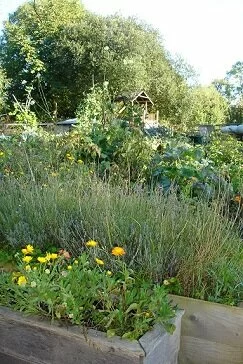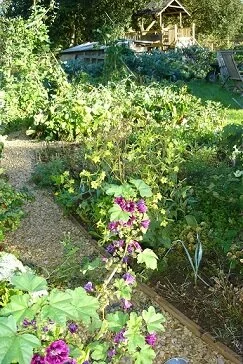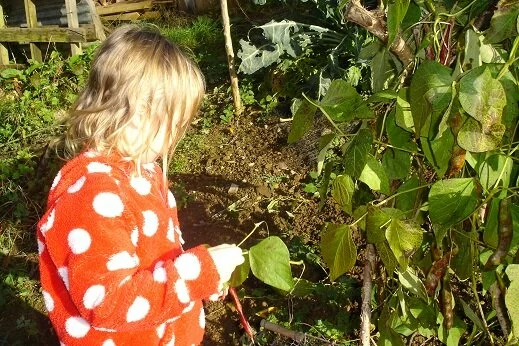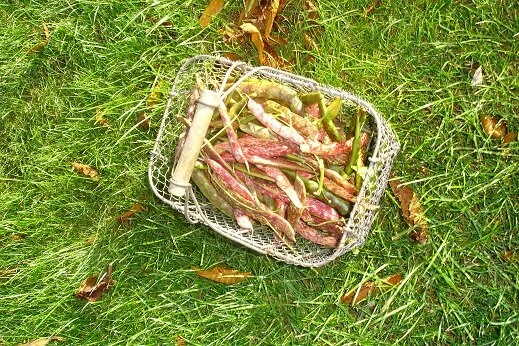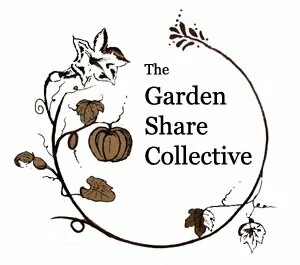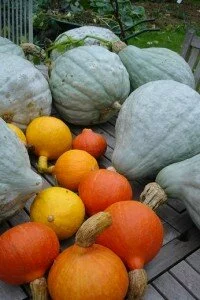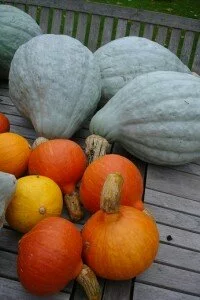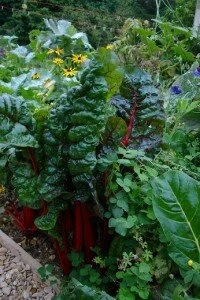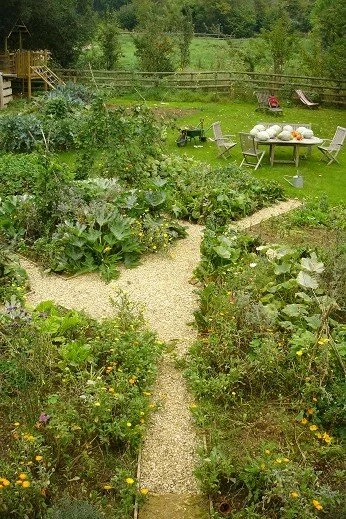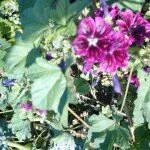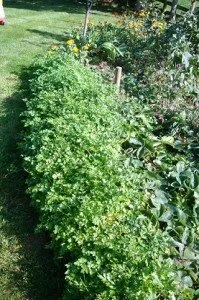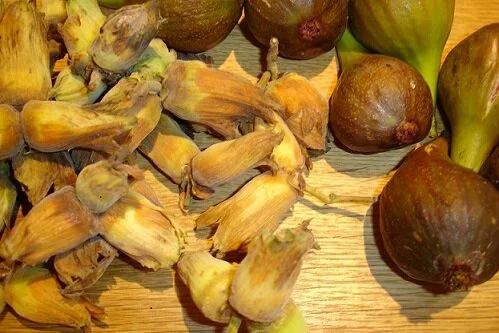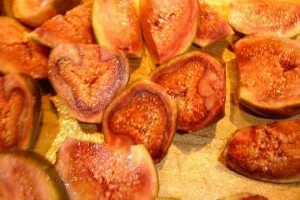In my garden this month there’s lots of clearing to do….
The ubiquitous calendula, and a few borage along with a few late verbena adding colour, but not much else. On sunny days, there are still a few more vibrant patches though….
Well, vibrant may be stretching it, but I love those gently sunny Autumn days when you’re suddenly reminded how much life there still is in the garden – thanks to our late, mild weather. I have to remind myself that scruffy though this garden is, this time last year, post-pigs, it looked like this:
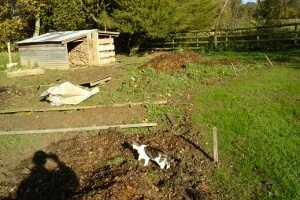
We’d not long sown grass seed on the lawn that’s been played on and eaten on so much this year and marked out paths and beds.
And the flowers may be fading fast but I’m loving the colourful veggies. Rainbow chard is as plentiful and useful as ever, carrots in a few different hues too and then there’s the borlottis…
They’re one of my favourite beans, growing well even in poor ground, so tasty, and it’s debatable which are most beautiful, those crimson speckled pods or the creamy beans. We picked all of the remaining pods (I had some good help as you can see) as they were planted amongst the squash. This area has all been cleared and as it’s next to where the potatoes grew, it gave us a good sized cleared area to empty the contents of one of our three compost heaps onto, with a view to next year’s planting.
My favourite way of cooking the borlottis has been simply with garlic, olive oil and chopped tomatoes, adding a little water as they slowly simmer if it gets too dry. They made a lovely Autumn supper one night with our own pork chops (marinated in a maple brine from a Diana Henry Salt Sugar Smoke recipe) and chunks of our Mother Hubbard squash roasted with garlic, rosemary and olive oil.
I still have bulbs that I’m keen to plant once I’ve made some sense of the area just at the back of our house; Spring flowering bulbs including Alliums and Grape Hyacinth should add some easy colour early in the year. We made a late sowing of clover (various colours of flowers) and grass on a new area of ground we’d cleared and it’s thriving after a few weeks of growth. Hopefully next year it’ll prove attractive to bees and beneficial insects and when we mow it, we’re thinking it may be good for the compost heap too – I like the idea of the prettiness of a patch of clover lawn too of course.
It’s mostly food that interests me in the garden at the moment though.
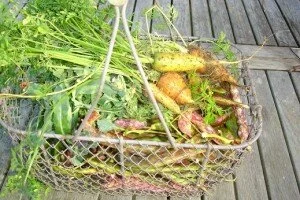
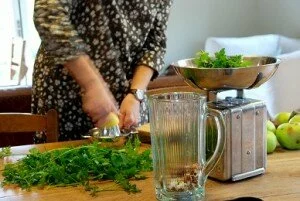
As the balance swings between kitchen and garden (the warmth of the kitchen is often winning) I’m very grateful to the garden for providing me with plenty of food to pop out and gather. Swede are being brought in lots at the moment (love them just mashed with butter and black pepper) along with purple sprouting broccoli, beetroot, spinach, carrots and handfuls of parsley from that still-thriving hedge. Waiting for frosts before we start on the parsnips but we didn’t want to take any chances with the quince. With a storm heading this way at the beginning of the week it would’ve been a shame to lose our first, precious harvest so they were all picked.
Would love to join in again with Lizzie Moult’s great Garden Share Collective. As we bring squashes in to store for the winter and gather quinces for quince cheese, quince ratafia and warming tajines, it’ll be lovely to have a look at the Spring/Summer bounty in gardens on the other side of the world.

